

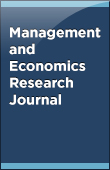
10.18639/MERJ.2019.954696
Review Article
Nov 19, 2019
During decades of isolation beginning from 1962 and lasting till 2011, Myanmar seriously suffered from international sanctions. Ruled by the military regime, the country was doomed to economic and social failure. Studying the process of its transformation seems to be very interesting both from business and scientific points of view, and this is the main purpose of the paper. The literature and information about Myanmar’s reforms are considerably limited and it is deeply justified to contribute to the knowledge on this fast emerging country. The methodology used in this article is based on the analysis of the existing statistical data, coming from international reports and statistic yearbooks. The basic parameters of these analyses concern macroeconomic and social indicators. Comparisons with The Association of Southeast Asian Nations (ASEAN) countries are critical for the conclusions drawn in this article. On its way to the formation of a democratic society Myanmar faced a lot of problems. Some of them, such as the unsolved Rohingya refugee crisis, have had a bad effect not only on domestic reforms, but also a global effect, sometimes recognized as an international crisis. For business, Myanmar is one of the fastest growing economy in the world with a population of 51 million, which makes it an attractive market. The GDP per capita in Myanmar is low, so the domestic market guarantees a growing demand.
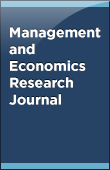
Original Research Article
Nov 15, 2019
Financial inclusion has remained a critical driver toward poverty reduction in an economy. There has also been much focus on financial inclusion of women as they tend to be marginalized by the mainstream financial institutions. Kenya on its part has achieved high levels of financial inclusion. Access to bank services has been easy and at a low cost. Till 2016, access to credit has also been easy for all persons with bankable ideas in all sectors including agriculture for either gender. However, this changed after the review of the Banking Act that introduced the interest rate capping in the financial market. The purpose focused on increased collateral requirement and additional customer information requirements on the financial performance of women-owned Agribusiness small and medium enterprises (SMEs). The target population of this study was 950 licensed women SMEs with a sample of 274 licensed SMEs. From the study, collateral requirement due to interest rate capping had a negative and statistically insignificant effect (r 5 20.114, p 5 0.079) on the financial performance. On a positive note, the study found that additional customer information requirement due to interest rate capping had a positive and statistically significant contribution (r 5 0.437, p 5 0.000) on financial performance of agribusiness SMEs. The study concluded that effective maintenance of financial records not only helps SMEs access credit but also help them improve performance. This study strongly recommends capacity building among women on maintenance of financial records as it will improve access to credit and performance of their businesses.
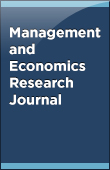
10.18639/MERJ.2019.958453
Review Article
Nov 07, 2019
Special Issue S4: “Global Trade Wars - A Case of Sino-US Trade War”
To comprehend Sino–US trade relations, this research article decrypts the trade relations among China and the United States from the American government perspective (Presidency of Donald Trump). The American government claims that the Chinese government’s high import levies and subsidies to Chinese firms cause the Sino–US trade war, bringing about economic misfortunes in the United States. The American government thus contends that forcing high levies on Chinese products (imports) can be corrective measures for Chinese governments’ actions. This research article discovers that the American administration overestimates the deficits. Measures for diminishing China’s imports cannot raise the American employment rate; on the contrary, China furnishes the United States with high caliber and low-cost products and services. Although China is one of the top investors for the United States, Chinese capitalists tend to capitalize the surplus by investing in American ventures and bonds. However, American administration limits Chinese capitals because of security concerns supported by various other nations (i.e., France, Germany, Britain, Australia, the European Union, Australia, Canada, and Japan). The fear for Chinese capitalists due to China’s moving up to the high end of the value chain is an outcome of economic advancement. Consequently, the two nations should restrategize Sino–US trade patterns by developing trade and economic co-ordination by means of trade arrangements.
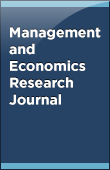
10.18639/MERJ.2019.953623
Review Article
Oct 21, 2019
Special Issue S4: “Global Trade Wars - A Case of Sino-US Trade War”
Globalization today can convincingly be said to have reached its pinnacle. However, with the world turning into a global space of homogeneity the stakes of survival have risen up too. The various forms of environmental degradation culminating into climate change have been accelerated due to globalization. This review discusses one such form of global environmental degradation that poses a serious threat to the health of citizens in the Global South. The phenomenon being talked about here is that of global waste dumping, a practice that has caught up roughly over the past four decades. The context that helps in illustrating the same is the United States–China trade war, narrowed down to the recent ban imposed by China and India on the import of plastic waste. As a reaction to excessive plastic waste dumping from Global South to Global North, 180 nations agreed in Geneva to add mixed plastic scrap to the Basel Convention. However, as will be shown in this review, the burden has only shifted to even poorer nations who willingly buy plastic waste from countries of Global North. The phenomenon of dumping plastic waste can be explained through the distinction between the developed and developing countries understood in the dualist taxonomy of Global North and Global South.
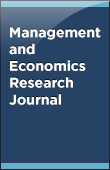
Original Research Article
Oct 11, 2019
It is known that the service quality is the main parameter of every service providing organization for survival. Therefore, the organizations must evaluate their service quality periodically and plan for improvement. While evaluating their service quality, companies should rely not only on the end users’ evaluations but also on the gap between the service providers’ perception and the customers’ perception about the service quality level. The study aims to compare the service providing perceptions of department/unit managers and the service quality evaluations of students at private universities. For this purpose, we used the ServQual survey questionnaire to assess all service providing academic and administrative units of Tishk International University (formerly known as Ishik University). The data have been collected in two phases; first, we gave the ServQual survey questionnaire to managers and employees of each department/unit. The survey contained questions about the opinions of managers and employees about how quality service has been delivered in their unit. In this context, cafeteria, students’ affairs, dean of students, academic department of student, and accounting unit were evaluated. Second, ServQual was modified for the students to evaluate the service quality that they perceive in those units. Finally, the evaluated results of the managers and the students were subtracted from each other, and the gap was determined. Based on the results, we gave some suggestions to the administration.
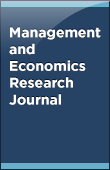
10.18639/MERJ.2019.956433
Review Article
Oct 08, 2019
Special Issue S4: “Global Trade Wars - A Case of Sino-US Trade War”
United States (US) and China are the two largest economies of the world, where the former is the biggest developed economy and the latter is one of the largest developing economies of the world. This paper implores to assess the cause and effect of the US-Sino Trade War. The attempt is to understand the reasons behind the same and its impact on warring economies and collateral damage to the economies of other countries. The experience establishes that trade wars have no winners. The war started in year 2018; the long-run effects of this trade war are still to be seen yet; till date the impact of this crisis has been substantial for both the US and China.
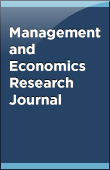
10.18639/MERJ.2019.874701
Review Article
Oct 02, 2019
Special Issue S4: “Global Trade Wars - A Case of Sino-US Trade War”
This article is written to summarize what has been going on in trade war between the United States and China and to express how this war affects trade relations of Latin America with both of the actors being involved in the trade war. The reason why Latin America is chosen as a region to work on rests on the fact that both the United States and China have been conducting considerable trade relations with the region. This article is organized to analyze what kind of a position Latin America would be at during the upcoming moves from two giants and how the region should revise its ties with both economies considering the past relations it has had with before this trade war emerged. There have been many moves taken by the United States and China after the dispute started to show up; however, Latin America has been conducting considerable relations in terms of trade, politics, historical orientation, and geographical ties with both giants since long before the trade dispute began. Therefore, this article has an aim to recover the historical trade relations of Latin America and to have some clues to determine what can come next for the region’s economic position and trade relations. Colonial past of the region, the role it has played during the Cold War, the involvement of the Latin America in trade relations with China, and Chinese presence in the region are the factors that are included in the article to understand the critical position of Latin America in the Sino–US trade war.

Original Research Article
Sep 30, 2019
Despite financial inclusion being a key driver of growth and income equality, developing countries continue to have significant proportion of populations without access and usage of basic formal financial services. Instead, most still subscribe to informal financial services, which have low or nonexistent entry barriers. In the context of small holder farmers, informal financial services can moderate their access to finance where there are gaps in the formal financial instrumentation. The present study, therefore, sought to determine the moderating effect of informal financial services on the use of formal financial services among small holder farmers in Kenya. The target population for this study were small holder farmers from Nakuru, Busia, and Kirinyaga counties in Kenya; a sample size of 496 was obtained and selected through purposive and stratified random sampling techniques. Data were collected using copies of a researcher-developed questionnaire and analyzed using multiple linear regression analysis with Stata. The findings reveal that informal financial services did not have a moderating effect on utilization of formal financial services among small holder farmers. The study recommends that the formal financial institutions develop products and work closely with informal financial services to encourage more utilization of financial services.
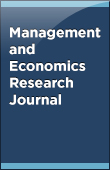
10.18639/MERJ.2019.945413
Review Article
Sep 30, 2019
Special Issue S4: “Global Trade Wars - A Case of Sino-US Trade War”
The paper attempts to provide an overview of the ongoing trade war between the United States and China. The major focus is to discuss the recent developments and discuss a time line of the events. It also looks at some of the other aspects that are linked with the ongoing trade war such as the Foreign Investment Law, the White Paper issues by the Chinese government discussing the trade war, and the Huawei issue.
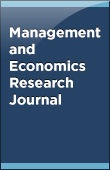
10.18639/MERJ.2019.954639
Review Article
Sep 27, 2019
Special Issue S4: “Global Trade Wars - A Case of Sino-US Trade War”
The Sino–United States (US) trade war since 2017 has triggered Sino–US confrontations in the economic field and also intensified geopolitical competition. From a historical perspective, the current Sino–US trade war is a continuation of the conservative US trade policy, rather than a dramatic development. From a global perspective, the trade dispute between China and the United States is only part of President Donald Trump’s grand global economic strategy that aims to stabilize the economic hegemony of the United States. Trump’s economic diplomacy targets both China and its Western allies, with the goal of achieving a comprehensive and complete solution. The developmental status of the United States shows that its economic strength is increasingly insufficient to support the status of global hegemony, as well as being increasingly incapable of meeting the global requirements for providing public goods. Therefore, trade wars are essentially trade policy adjustments made by the United States to consolidate its hegemonic foundations and fight against potential opponents, e.g., the trade wars against Germany in the 1960s and Japan in the 1980s. Based on the timeline of the current trade war, Trump was obviously well prepared. Trump’s behavior now clearly violates the basic rules of WTO and his policy does not focus on technology and innovation, which is key to future economic growth. Whether Trump’s well-planned and aggressive economic strategy will work, it will fundamentally change China’s US policy from cooperative to more independent.
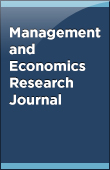
10.18639/MERJ.2019.952971
Review Article
Sep 25, 2019
Special Issue S4: “Global Trade Wars - A Case of Sino-US Trade War”
This study reviewed standard international trade theories as they pertain to the impact of trade restrictions. Current empirical studies were reviewed to see whether evidence supports trade theory predictions. Conventional price impacts in standard models of international trade show that trade restrictions are detrimental for trade for both countries involved, and the empirical evidence from current studies confirmed this. The current tit-for-tat tariff escalation between China and the United States has led to, among other things, increased domestic prices to both American consumers and producers; lower export prices to some of the Chinese exporters and American firms based in China; reduced import and export trade between the two countries that would lead to costly adjustments in supply chains; loss in net welfare and employment; and loss in competitive advantage to firms in both countries that produce for export. Therefore, efforts should be made to de-escalate these trade tensions.
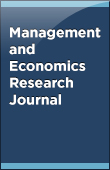
Original Research Article
Sep 20, 2019
To investigate the association between return to scale (RTS) and profitability in the United Kingdom banking sector, we adopted logistic regression analysis, using sample sizes of 135, 140, and 121 banks for the years 2016, 2015, and 2014, respectively. Our findings indicate a positive and statistically significant association between profits as measured by return on assets (ROA) and increasing RTS during the three years of the sample period. We also investigated the relationship between bank size as represented by the log of total deposits and RTS. Our findings also indicate that bigger banks show increasing RTS, but with decreasing rate, as represented by the negative coefficient of the square of the log of deposits. To investigate further the link between bank size and operating cost with ROA, we employed panel data regression, covering the sample period (2011-2016) for the largest 25 banks. Our results show that there is a positive and significant association between ROA and the total assets of the largest banks, but the operating expenses impact negatively on the ROA. More specifically, 1% increase in total assets increase ROA by 2, and 1% increase in the operating expenses reduce ROA by 1.7%. These results imply that bigger banks in the United Kingdom’s banking sector are able to gain competitive edge in attracting deposits as they operate along the downward sloping portion of average operating cost curve.
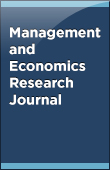
10.18639/MERJ.2019.939744
Review Article
Sep 09, 2019
Special Issue S4: “Global Trade Wars - A Case of Sino-US Trade War”
The article is devoted to one of the urgent problems of the world economy: the trade opposition of the United States and China. Due to the fact that these countries occur to be the largest economies in the world, their conflict cannot in one way or another be reflected in other subjects of international economic relations. The article analyzes the main stages of the trade war between the United States and China and formulates the causes of the crisis. On the basis of a regional approach and analysis of statistical data, it became possible to make an assessment of the effects that the US–PRC rivalry has on mutual trade, investment, and energy cooperation between Russia and China. It is noted that in connection with the trade conflict, Russian–Chinese relations are reaching a new level of development, and the number of joint economic projects is growing. However, the confrontation between the United States and China brings not only opportunities but also risks for Russia. The authors make a forecast about the impact of the trade war on the economy of the Russian Federation in the short and medium term.
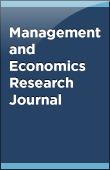
10.18639/MERJ.2019.942734
Review Article
Sep 04, 2019
Special Issue S4: “Global Trade Wars - A Case of Sino-US Trade War”
US–China economic ties have expanded substantially since China began reforming its economy and liberalizing its trade regime in the late 1970s. Total US–China merchandise trade rose from $2 billion in 1979 (when China’s economic reforms began) to $636 billion in 2017. China is currently the United States’ largest merchandise trading partner, its third-largest export market, and its biggest source of imports. There are multiple areas of disagreement that preceded the trade war. One ground is that China is buying off American assets. It is also alleged that China violates US patent rights. It is also stated by United States that China has restrictions on US companies entering certain areas in production in China. The scale at which US–China trade patterns are changing and ownership patterns of both countries’ MNCs are changing results in a mystification of trade data due to intra-firm trade imports and exports. This may be a major reason why apparent trade patterns do not clearly serve as a guide for commenting on policy wars. This study examines the patterns in the US–China exports, mutual imports, and current account balances over a nearly 25-year period, to form a view about whether the trade war is justified. The general methodology in this paper has been to use a set of semi-log growth equations that enable comparison of various trade-related variables between the United States and China. The method focuses on the long-term patterns before and after global financial crisis (GFC), in the two countries, with the help of a standard dummy variable model. In conclusion, the US claims seem to be unfounded when studied through the lens of long-term trade patterns between the two countries. China’s export performance is much better. The United States’ dependence on imports from China has fallen drastically. Finally, the current balance of payments (BoP) of the United States continues to remain highly negative; whereas, in spite of the setback due to the GFC, China’s BoP position all along continues to be positive.
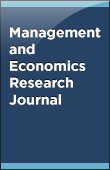
Review Article
Aug 30, 2019
The insertion role of Brazil in the international scenario, in particular, the change regarding the foreign direct investment (FDI) in the country, is the main subject of this paper that seeks to demonstrate what occurred in the twenty-first century. The first 15 years of the new century saw an increase in the participation of Brazil in the multipolar scenario with China’s growing approach. After the coup d’etat of 2016, the country changed that trend and began to review its foreign partnerships, positioning itself as a representative of US interests in Latin America and seeking to distance itself from the group of former BRICS (Brazil, Russia, India, China, and South Africa) partners.